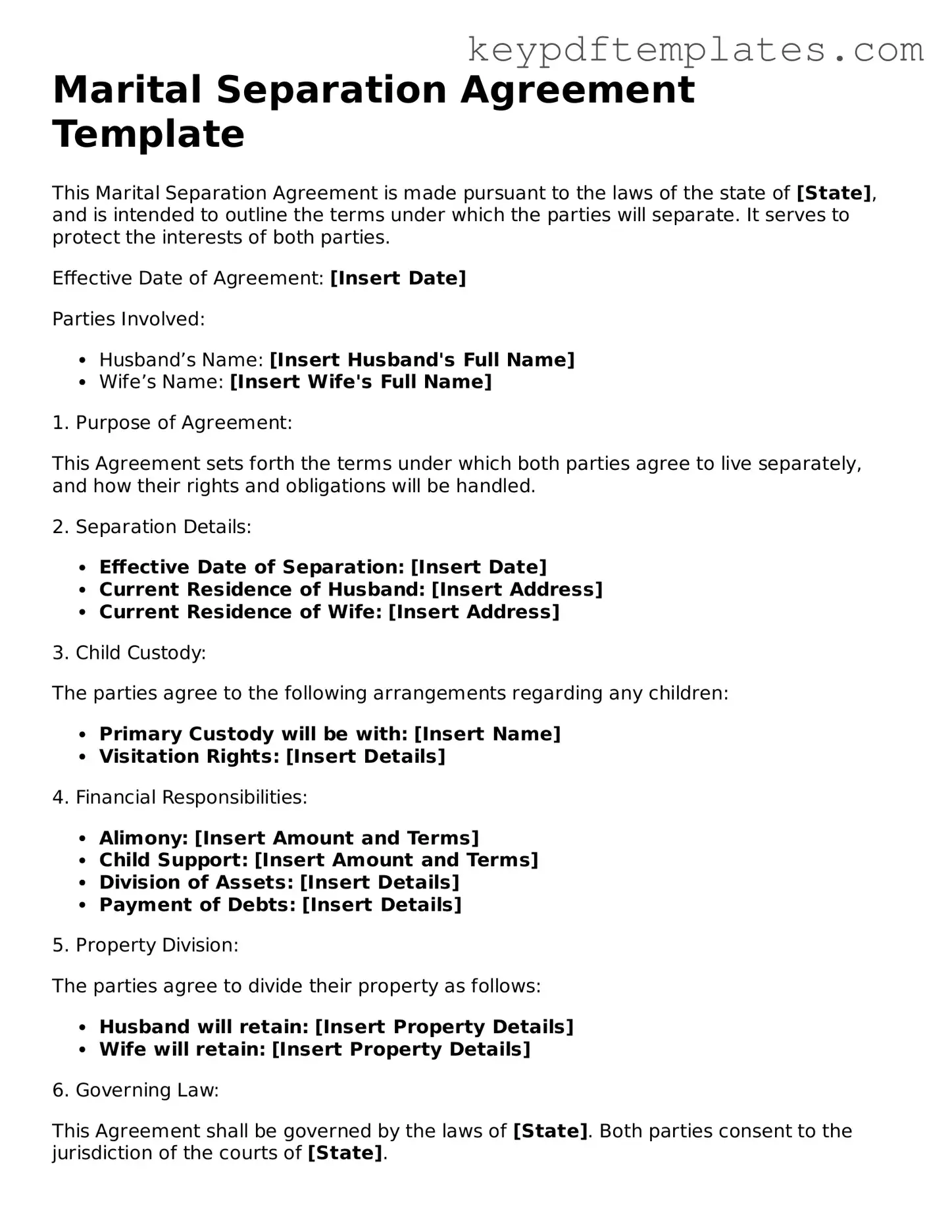Printable Marital Separation Agreement Template
A Marital Separation Agreement is a legal document that outlines the terms of a couple's separation, detailing issues such as property division, child custody, and support obligations. This agreement serves as a crucial tool for couples who wish to formalize their separation while avoiding the complexities of divorce. By clearly defining each party's rights and responsibilities, it can provide peace of mind during a challenging time.
Modify Document Online
